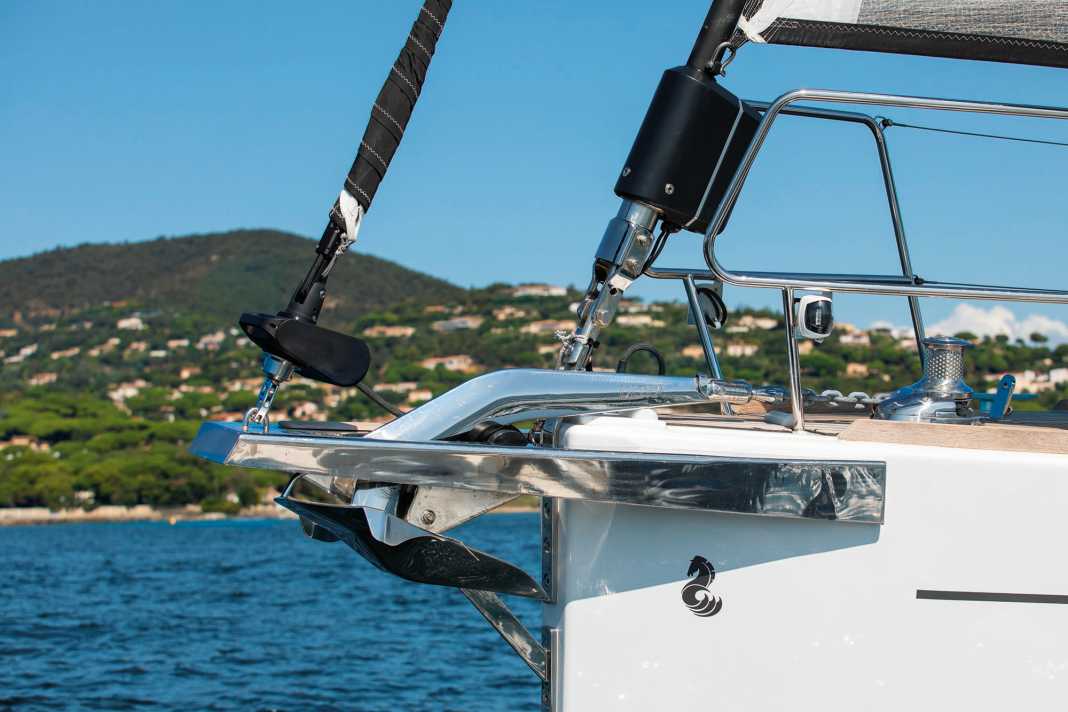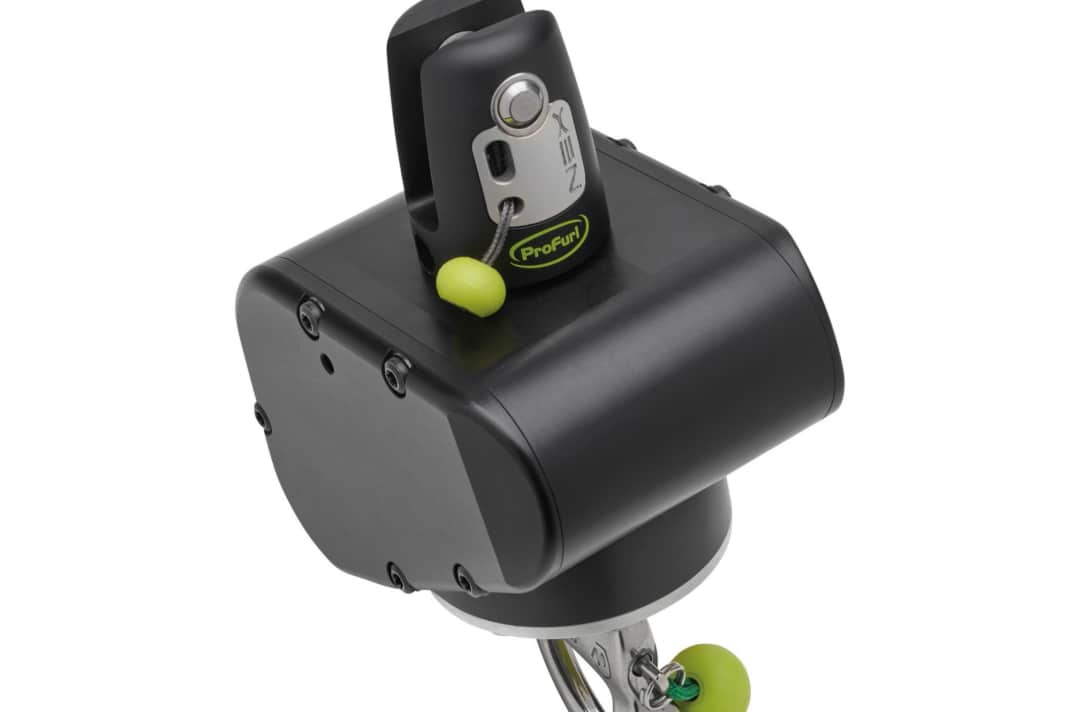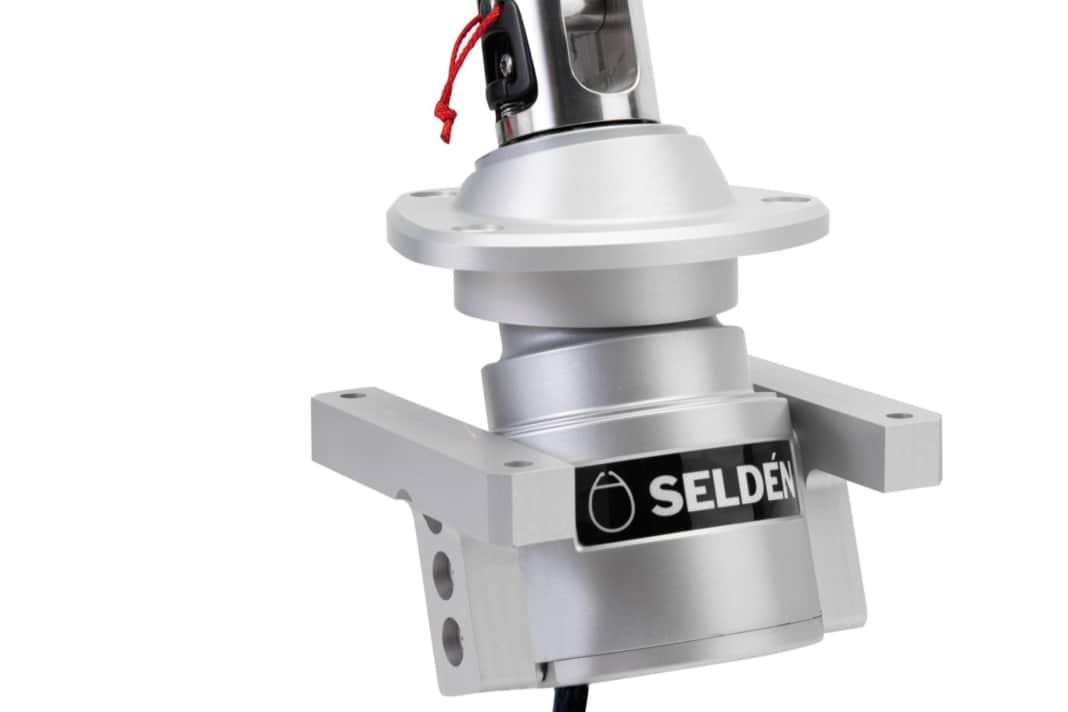


One pull on the sheet and the Code Zero is upright. One push of a button later and - bang - it's furled again. This is what the electric furling systems in the CXe series from Seldén promise. They are fitted in place of the endless drum and drive the stay at up to 500 revolutions per minute.
This allows the code zero of a 40-foot yacht to be furled in less than ten seconds at the touch of a button. And all without a furling line running across the deck. Manoeuvres with manual furling systems for Code Zero or gennakers often look different. Whilst setting is just as quick, retrieving or rather furling is sometimes a sweaty affair.
Also interesting:
In order to wrap the cloth around the relatively thin torsion stay, a lot of turns are necessary, i.e. many metres of reefing line have to be pulled through. In addition, it is a textile rope and not a rigid aluminium profile. Depending on the quality of the stay and the pull on the halyard, a certain amount of pre-tension is required before the sail is evenly furled.
Anyone who has ever seen a motorised furler in action wonders why the technology is not much more widespread. At present, only Facnor, Profurl and Seldén offer such systems, whereby Facnor and Profurl belong to the Wichard Group and the systems are technically very similar, see individual presentations. The disadvantage of all available systems is the cost. The entry-level sizes of all three providers range from 115 to 150 square metres of sail area, which corresponds to gennakers on yachts over 40 feet.
Between 4,000 and 5,800 euros must be invested in the furler. By comparison, a manual endless furler of the same size is available for between 1,600 and 2,600 euros, depending on the manufacturer.
Differences in fixing rolled up sails
There are significant differences in the electrical infrastructure required, which has an impact on costs. Electric furlers require cabling and control units that differ significantly depending on the model and the technology used. Facnor and Profurl use relatively conservative technology and can be supplied directly from the on-board power supply. The additional installation required is similar to that of an anchor winch, although the power consumption is still manageable at 400 and 800 watts respectively. An additional battery in the bow is therefore not absolutely necessary. The systems should not consume more than one ampere hour per furling operation.
Seldén is different. The Swedes use their brushless motors and the SEL bus system, which are familiar from their electric winches. It increases the on-board power supply voltage internally to 42 volts and can therefore cope with significantly higher outputs without the need to lay thick copper cables.
Seldén's drives operate at 1,000 watts and, according to the manufacturer, only require 0.13 ampere-hours for each rolling process. The system is therefore much more efficient. At the same time, the Swedes furl around six times as fast, which means the sail kills for less time. The other side of the coin: if the SEL bus is not already available to control other Seldén components, the switch to an electric gennaker furler will be extra expensive, as an additional investment of around 1,400 euros is required for the starter pack and the control unit. Facnor and Profurl supply the necessary basic electrical equipment.
Another difference between the systems concerns the gears and their ability to fix the furled sail. None of the systems are designed for reefing, i.e. sailing with a partially furled code or gennaker. Nevertheless, the cloth should not unroll accidentally if the sail is already set in the harbour or is to remain rolled up for a while.
Facnor and Profurl only release the cloth when the motor is running backwards. Seldén's system has significantly less internal friction and can therefore unroll itself more easily if the usual Velcro fastener on the sail does not hold. Seldén therefore recommends blocking the stay in the harbour or during longer sea passages.
Top-down furler
As standard, all systems are designed for conventional furling of the sails from bottom to top, as is usual with Code Zeros. Gennakers can only be furled with this system if they have a stay or similar stiffeners pulled into the windward leech. Profurl and Seldén also offer conversion kits as accessories to use the systems as top-down furlers. As the name suggests, the sail is furled starting from the top, as it is more voluminous there. The lower and rear part of the cloth is only gathered in with the last few turns.
The advantage of these systems: the luff of the gennaker is not connected to the stay over its full length and can rotate better to windward, and the head angle and thus the sail as a whole can be larger.
Seldén's top-down system consists of a co-rotating head fitting and an additional neck swivel. Profurl uses the Spinex system familiar from manual systems. The anti-torsion stay is fitted with ribbed plastic balls along its entire length, which significantly increase the diameter of the cable. This increases the winding speed as it removes more cloth during furling. The balls also separate the system and the sail, thus preventing the dreaded backspin or the usual twisting of the sail. However, the stay fitted with balls is also more difficult to stow and the weight of the system also increases further.
Three manufacturers, six systems in detail
Facnor IB-FXE & FXE



The two French brands Facnor and Profurl have been part of the Wichard Group since 2013 and share the developments, which is why the products are very similar and technically largely identical. The electric furling systems are suitable for Code Zeros and gennakers with sewn-in stays. Top-down furling is not provided. The prices for the mobile variants FXE 4500 and FXE 7000 are between 5800 and 8300 euros, depending on the model. If you already have a manual Facnor system, you can continue to use the top swivel and opt for the conversion kit, which is around 750 euros cheaper. Whether the old sail and stay can continue to be used depends on the conditions on board. The drive unit is around five centimetres higher than a manual furler.
Profurl NEXe light & NEXe



The NEXe series includes two electric furling systems for code zeros and gennakers with sewn-in stays or load-bearing fibre bundles. To use them as top-down furlers, the spinkit known from the manual system can be used. Prices range from 5,900 to just under 11,000 euros. If you already have a manual system, you can continue to use the top swivel and opt for the conversion kit, which is around 800 euros cheaper. Whether the old sail and stay can continue to be used depends on the conditions on board. The drive unit is around seven centimetres longer than a manual furler from the NEX series. Like Facnor, Profurl is part of Wichard, which is why the products are very similar and technically largely identical.
Seldén CXe 25 & 45



The Swedes offer two different sizes for sail areas of up to 115 and 200 square metres respectively. Both models are available as built-in versions (TD) or as mobile versions (OD). The furlers work with Seldén's own bus system with a system voltage of 42 volts, which means that the cable cross-sections are very small. In addition, the brushless motors work in two speed levels and can wind up the sails around six times as fast as the Facnor and Profurl drives. The smallest model costs around 3,700 euros. Basic equipment with the SEL bus is required for control, so the purchase costs add up to around 6,080 euros. With the optional neck swivel, the systems can also be used as top-down furlers.

